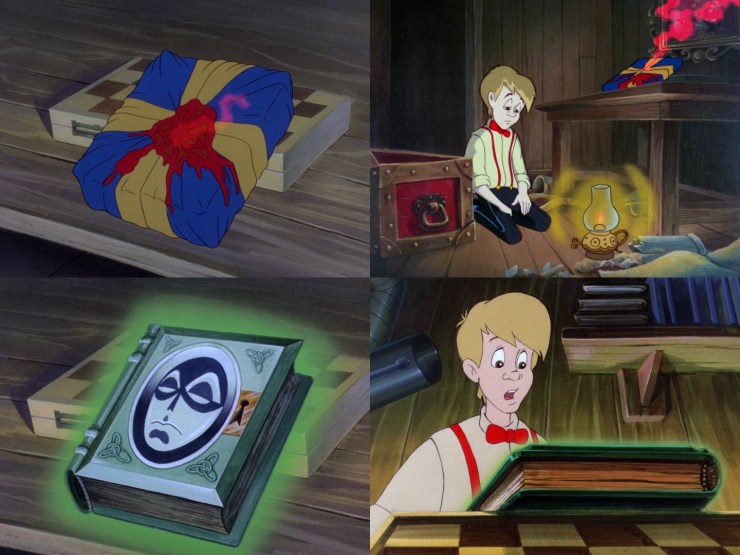Apologies for the unexpected Revenge of the Remakes hiatus. Life be life’in, as someone probably says. It’s been almost nine months since we rode Dick Mass’ (The) Lift and went Down on his (The) Shaft, but I’m back with a vengeance. Countless horror remakes remain to cover, so what’s next? David Cronenberg’s on my mind after slathering myself in the nastiest, most exceptional body horror movies—why not let the Canadian icon make his second column appearance? Except this time, he’s the filmmaker getting remade.
I haven’t been foaming at the mouth to highlight Rabid, not because of Cronenberg’s rapidly paced and frantic outbreak thriller. Jen and Sylvia Soska’s Rabid is a messy and underwhelming expansion of Cronenberg’s themes. It’s “modernized through a female perspective,” doing plenty differently, yet the filmmaking duo’s execution is hardly en vogue. As a standalone feature, Nu Rabid is a labor of cringy fashionista dialogue and ill-fitting style over substance that loses its own plot. I can’t in sane mind recommend Rabid (2019) over Rabid (1977)—but that’s not the purpose of this column. Let’s sink our teeth into the original/remake conversation.
The Approach

‘Rabid’ (1977)
The Soska Sisters don’t want to recreate Cronenberg’s Rabid. What’s conceptualized is a spiritual remakequel of sorts, mutating Rose’s condition far beyond an armpit tendril. Cronenberg’s doing a small-scale 28 Days Later in Montreal, given how the transmission of “rabies” drives infecteds to violently attack innocents. The Soskas think beyond Dr. Keloid’s oopsie and conjure a medical nightmare that includes monstrous body horror, Silent Hill-twitchy nurses, and Resident Evil evolutions like a Majini shambler. Cronenberg’s spreading disease lends to straightforward representations of almost zombie-like horrors, where the Soskas try to bring visual components to another, more illustratively evil level.
In the remake, Laura Vandervoort stars as Rose Miller 2.0, a young fashion designer for flamboyant Giorgio Armani wannabe Gunter (Mackenzie Gray) and his brand, “House of Gunter.” This version of Rose has makeup caked on her face that’s supposed to be a scar, leading her to be self-conscious around Gunter’s gorgeous models, including bestie Chelsea (Hanneke Talbot). In an act of pity or friendship, it’s not really clear, Chelsea convinces hottie freelance photographer Brad (Ben Hollingsworth) to ask Rose to be his date for Gunter’s latest afterparty. Rose finds out, flees on her motorbike out of embarrassment, and gets in a horrific car accident that leaves her face ugly and disfigured. Enter Dr. William Burroughs (Ted Atherton), his clinic, and an experimental skin graft using “Stem Cell Manipulation.”
By the time Rose reaches the Burroughs Clinic, almost twenty-five minutes have passed—and the Soskas finally remember they’re remaking Rabid.
It’s frustrating because Rabid (2019) mirrors tendencies of notable remakes that reach for originality despite updating someone else’s story. Rose swipes her autonomy back. She’s a career woman who emerges from surgery like a butterfly, hotter and more confident. Dr. William Burroughs supplies his patient with a “Red” superprotein drink that’ll curb hunger cravings and pills that may cause hallucinations, versus Marilyn Chambers’ 1977 Rose Miller, the Patient Zero who feasts nightly until her dead body is discarded by trash cans before the credits roll. Vandervoort’s protagonist believes her feeding scenes are dreamland side effects, leaving her daytime hours to sell Gunter on new designs for his upcoming “Schadenfreude” line. She’s a workaholic and unknowing guinea pig, not just a catalyst for apocalyptic doom.
Does It Work?

‘Rabid’ (2019)
As a standalone reinvention of Cronenberg’s white-knuckled cosmetic disasterpiece, Rabid (2019) sets itself apart. You can follow the roadmap of Rabid (1977), but indulge in a new experience. The incorporation of grosser gore gags gives Rabid (2019) a sleazier attitude, especially when Rose’s “hallucinations” intensify. You’ve also got Dr. Burroughs’ mad scientist arc, because he’s permitted to survive until the film’s credits. There’s a cultier vibe, and further development into what’s fueling Dr. Burroughs’ experimental surgeries beyond “Evil Big Pharma.”
Rose’s journey is less victim-coded, per the Soskas’ intention to spin a “feminist” interpretation. She’s not even the catalyst—that’s Dr. Burroughs’ wife, the Lovecraftian cancer casualty now festering in the bowels of his clinic who provides the magical stem cells. Rose encounters workplace drama, relationship woes, and the unfair treatment of societally deemed beautiful people as added context. The problem is, all this filler—which stretches the film to an exhausting 110 minutes—undercuts the feral horrors of Cronenberg’s fiercer perspective. A woman’s desire for attention and success supersedes outbreak paranoia and governmental coverups, failing to replicate the intimate terrors of sci-fi-powered rabies.
Rabid (2019) wants to express this unhealthy The Neon Demon fixation on glamor, but isn’t remotely successful. It might be bloodier and flashier, but the Soskas operate too far out of the box. Random sequences like scumbag daytime actor Dominic (Stephen Huszar) chewing his scene partner apart sell what Cronenberg once established, yet the remake’s overall issue is not wanting to be Rabid (1977). Don’t get me wrong; there’s hardly a reason to try and copy David Cronenberg—why beg for a comparison few can match? But in distancing themselves, the Soskas drift too far into obscurity, questioning why they remade Rabid if they wanted to make a catwalkin’ monster movie instead.
The Result

‘Rabid’ (2019)
Unfortunately, Rabid (2019) isn’t anywhere near as conversation-worthy as Cronenberg’s outstandingly superior original. The Soskas desperately try to put their stamp on a Canadian-American horror staple, but their motivations are misguided. It’s a janky interpretation that borrows from Repo! The Genetic Opera, video games, and cancelled-after-one-season CW dramas, none of which scream “Cronenberg.” Credit the Soskas’ special effects team as the most valuable players, because the practical makeup and prosthetics are the only upgrades. Rose’s exposed gums and teeth are vile (think Nemesis T-Type from Resident Evil 3), flesh-tearing is wildly icky, and monster designs on creature actors like “Twisty” Troy James look applaudably gnarly for an indie, yet the surrounding film wastes SFX highlights.
All the investment in Rose’s development is dead air. Vandervoort’s chemistry with Ben Hollingsworth’s persistent whimper of a love interest lacks any spark to make us care about their status. Hanneke Talbot’s portrayal of bestie Chelsea is a caricature of Pretty Little Liars prototypes, given atrocious lines like, “You’re either the food or the thing eating the food.” It’s all juvenilely underwritten, from the Soskas’ cameo as coke-sniffing gossipers in a bathroom stall to Dr. Burroughs’ in-your-face nefariousness. Unsubtle commentaries delivered by Mackenzie Gray’s Eurotrash boss or Rose’s overacting when awaking from “hallucinations” play like a Mad TV sketch, which all boils down to problems in execution.
It’s all pizazz, no focus. Red satin operating garments look exquisite, but there’s nothing under the extravagance. A lame duck take on an actress removing her glasses and becoming a sex idol, with every choice trumping the last’s new low. Maybe it’s the red lighting on the screen to indicate rabies spreads through saliva, because the Soskas don’t trust their audience would catch that, or the paltry patriarchal pushback as cartoonishly toxic men are slaughtered in vengeance without buildup. It’s the kind of film that bills professional wrestler Phil Brooks (aka CM Punk) on its poster, but he’s barely on screen for a few minutes. Rabid (2019) might grant Rose a richer role, but that’s moot representation since the film suffers from a distracting identity crisis.
The Lesson

‘Rabid’ (2019)
Honestly, there are a few lessons. The Soskas inspire hope by putting space between their Rabid and David Cronenberg’s Rabid, but the gap is like an uncrossable canyon. At what point is a remake even a remake? If you have all these fresh ideas, why remake versus create anew? It’s the conversation that started Revenge of the Remakes, when I pondered why 2019’s Child’s Play didn’t invent its own artificial intelligence horror tale instead of challenging the Child’s Play fanbase. There’s a sweet spot between reverence and reinvention that the Soskas soar past, and that’s their downfall.
So what did we learn?
● There’s such a thing as deviating too far from an original, teetering on the edge of misunderstanding core traits.
● David Cronenberg is infinitely better at remaking other people’s films than the reverse.
● Updated practical effects aren’t enough to save your remake if the story is lackluster.
● There’s no reason to challenge the crown when remaking a famous filmmaker’s works. However, you must understand that comparison is unavoidable and find a balance that’s your vision, but still a healthy homage.
All said, let’s be blunt. The ultimate sin of Rabid (2019) is being a bad movie (generous description). There’s a cheapness and hamminess to everything that feels more attuned to SYFY or Tubi exclusives. It’s a remake that’s already been forgotten, unlike when the Soska Sisters voluntarily appeared on OANN to chat with alt-right celebrity Jack Posobiec about being banned by Twitter for sharing graphic Rabid stills. Further evidence of the film’s identity crisis: using Cronenberg’s legacy to make a movie rooted in feminist intentions, only to publicly thank the despicable male demographic you demonize IN THE MOVIE for a viral boost. Everything on and off screen about Rabid (2019) is just one disappointing head shake after the next.
The post ‘Rabid’ Proves You Can’t Beat Cronenberg at His Own Game [Revenge of the Remakes] appeared first on Bloody Disgusting!.


